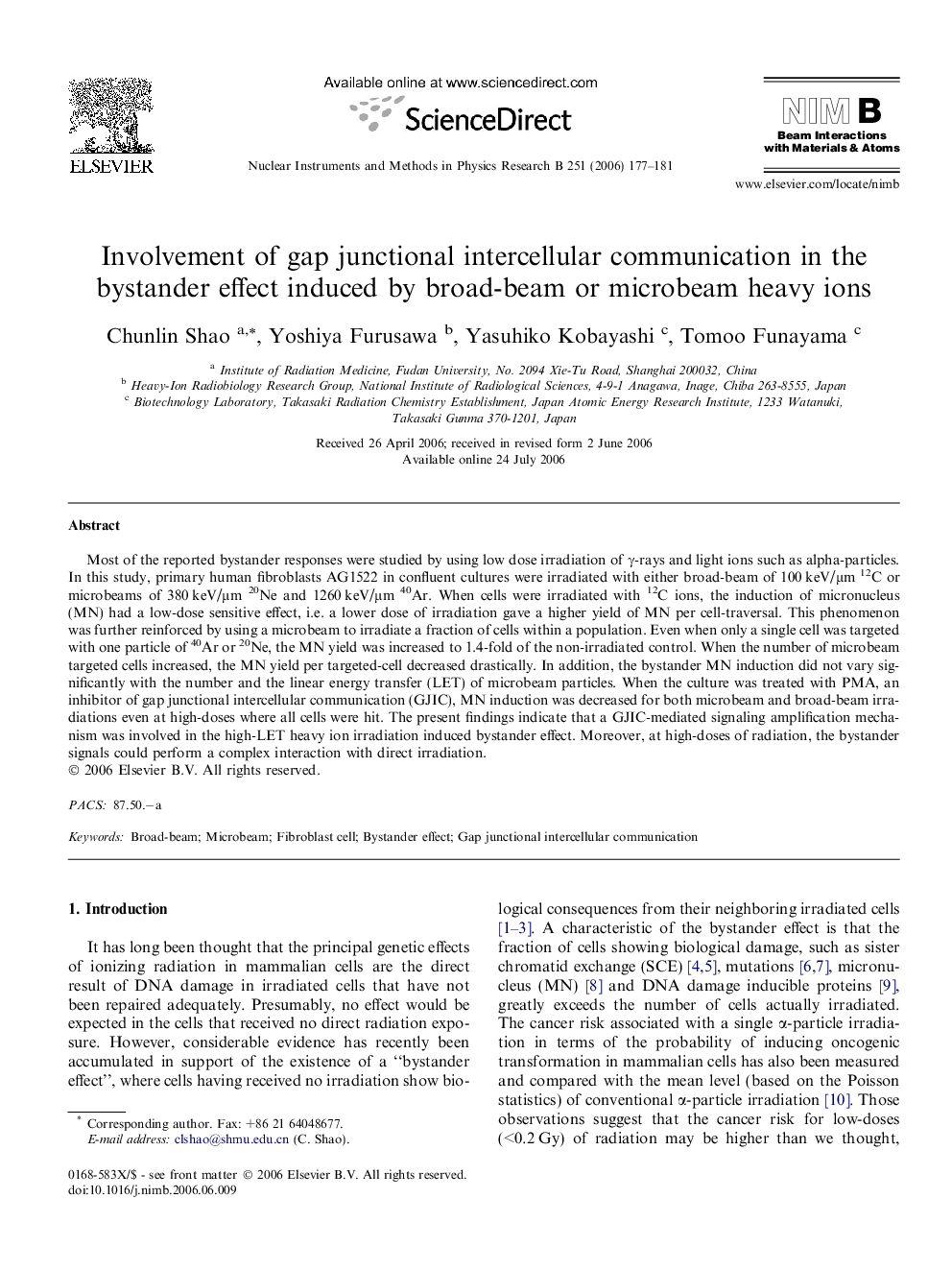| Article ID | Journal | Published Year | Pages | File Type |
|---|---|---|---|---|
| 1686123 | Nuclear Instruments and Methods in Physics Research Section B: Beam Interactions with Materials and Atoms | 2006 | 5 Pages |
Most of the reported bystander responses were studied by using low dose irradiation of γ-rays and light ions such as alpha-particles. In this study, primary human fibroblasts AG1522 in confluent cultures were irradiated with either broad-beam of 100 keV/μm 12C or microbeams of 380 keV/μm 20Ne and 1260 keV/μm 40Ar. When cells were irradiated with 12C ions, the induction of micronucleus (MN) had a low-dose sensitive effect, i.e. a lower dose of irradiation gave a higher yield of MN per cell-traversal. This phenomenon was further reinforced by using a microbeam to irradiate a fraction of cells within a population. Even when only a single cell was targeted with one particle of 40Ar or 20Ne, the MN yield was increased to 1.4-fold of the non-irradiated control. When the number of microbeam targeted cells increased, the MN yield per targeted-cell decreased drastically. In addition, the bystander MN induction did not vary significantly with the number and the linear energy transfer (LET) of microbeam particles. When the culture was treated with PMA, an inhibitor of gap junctional intercellular communication (GJIC), MN induction was decreased for both microbeam and broad-beam irradiations even at high-doses where all cells were hit. The present findings indicate that a GJIC-mediated signaling amplification mechanism was involved in the high-LET heavy ion irradiation induced bystander effect. Moreover, at high-doses of radiation, the bystander signals could perform a complex interaction with direct irradiation.
